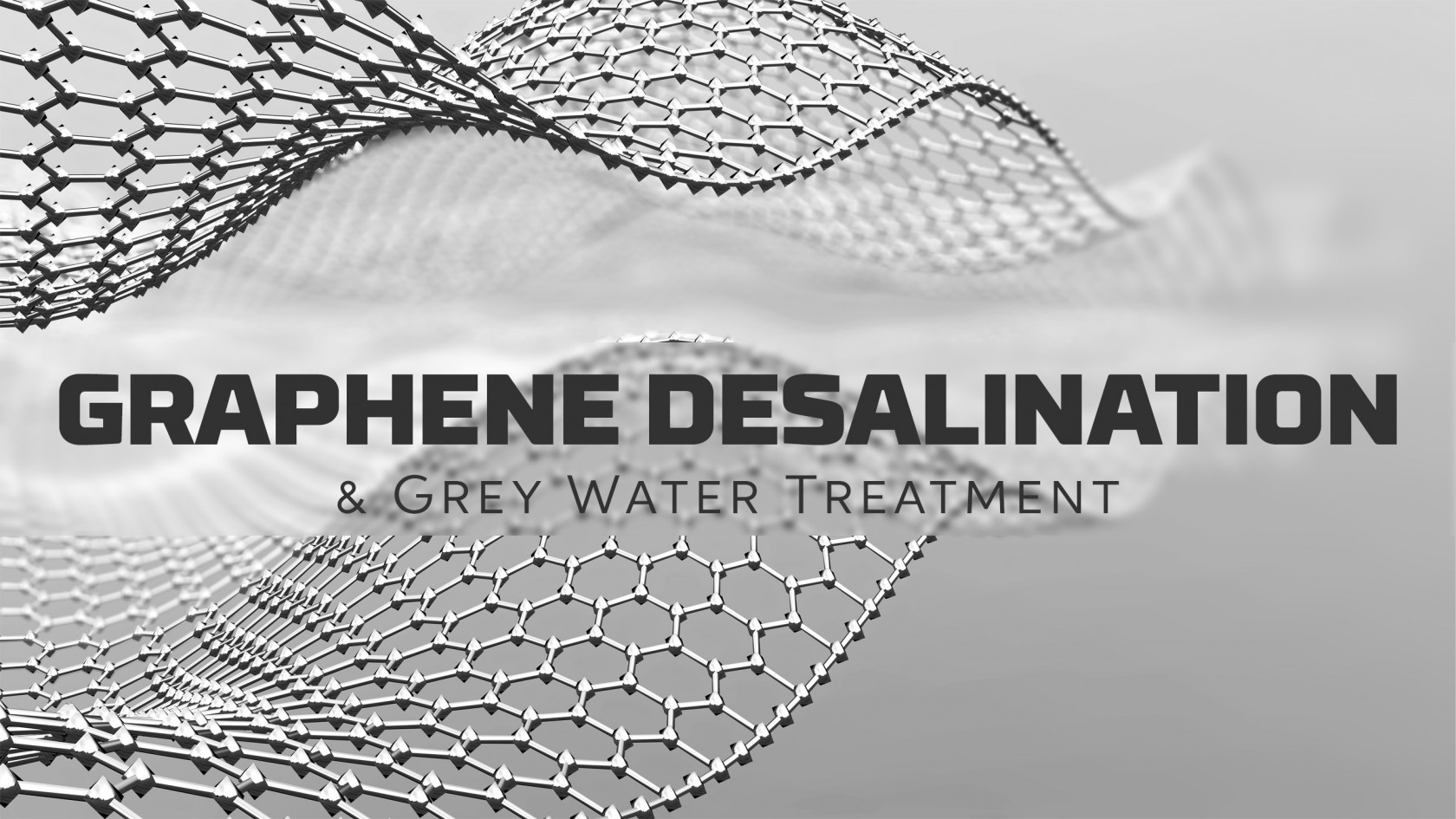Graphene Desalination
STATUS - PRELIMINARY RESEARCH
COLLABORATORS NEEDED
Desired outcomes of this project
Design and build a system that can use graphene or graphene oxide to desalinate sea water and convert it into potable drinking water.
Description
Graphene, often referred to as wonder material, is a 1-atom thick carbon membrane that is the basic building block for graphite. It is heavily researched and used in various applications including batteries, solar cells, super capacitors, DNA sequencing, display and touch screens, and water filtration among others. Graphene is about 100 times stronger than steel and is excellent conductor of heat and electricity. Graphene also has interesting light absorption abilities - making it a key component in solar cells.
This wonder material has unlimited potential when integrated with other elements and can play an important role in almost any industry. Graphene is
Graphene or graphene oxide membranes can be used to desalinate sea water and make it safe for drinking.
Why this is important
Water covers 70% of our planet. However, only about 3% is fresh water - that we use to drink, irrigate and clean. Of this 3%, some of this is locked away in frozen glaciers, unavailable for our use - effectively reducing potable and drinking water to less that 2%.
About 1 billion people around the world lack access to potable water. About 2.5 billion people are faced with water scarcity 3 months in a year. Not having potable water is a problem for about 2.5 billion people because of inadequate sanitation methods — exposing them to deadly diseases like as cholera, typhoid, and other water-borne illnesses. Two million people, mostly children, die each year from diarrheal diseases alone.
1 in 9 people have no access to safe drinking water. 1 in 3 have no access to a toilet.
By 2025, two-thirds of the world’s population will face severe water shortages.
This project will drive the need to solve the problem of desalinating sea water and making it usable for drinking, irrigation, sanitation and other needs.
What this Project needs to move forward
Highlights of working on this project
Project Prizes
Sponsorship
Preliminary Research and Documentation
Documenting Results and Recommendations
Related Wiki Projects
[Project Name - linked to page], [Project Name - linked to page], [Project Name - linked to page]
<img>
Size of water molecule
Size of virus
Size of bacteria
Size of other colloids
Size if the pore in the graphene oxide membrane
Building the desal system - drawing.
Drawing of the graphene oxide membrane.
https://research.csiro.au/graphene/
https://www.bbc.com/news/science-environment-39482342
This project is being developed as an open-source project with the following licensing:
- Software: GPL-3.0 - https://www.gnu.org/licenses/gpl-3.0.en.html
- Hardware, Design & other Intellectual Property: CC-BY-SA-4.0 - https://creativecommons.org/licenses/by-sa/4.0/

